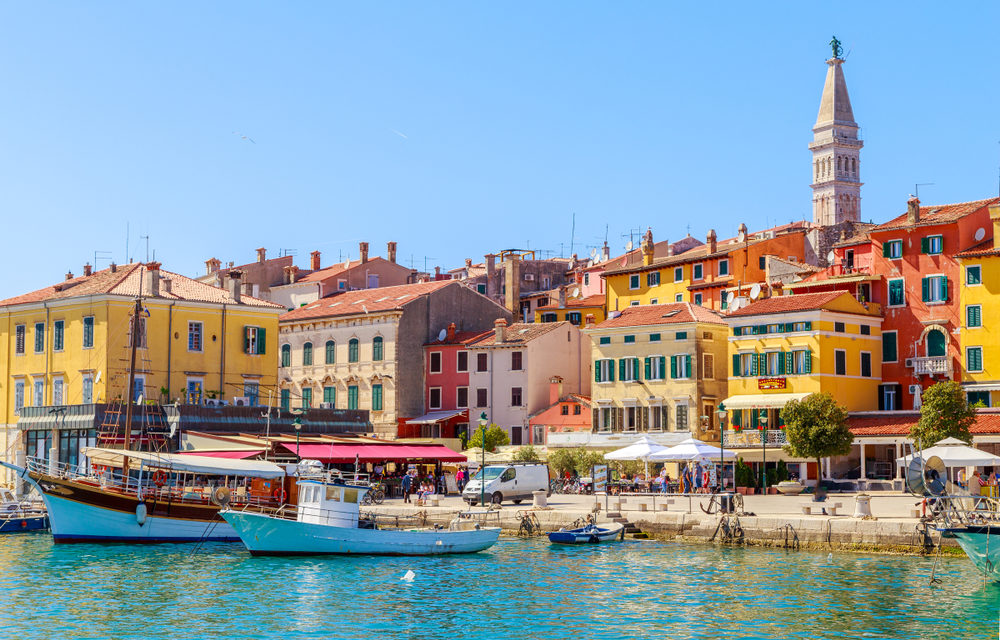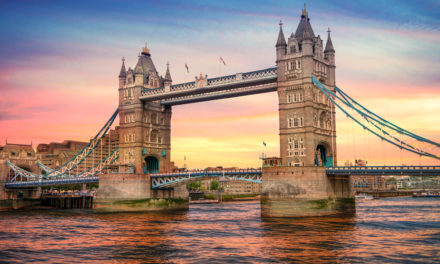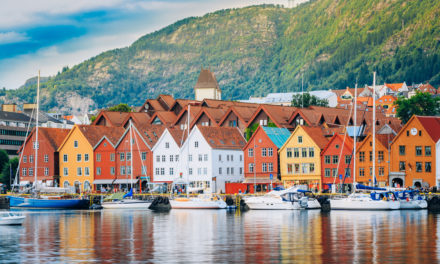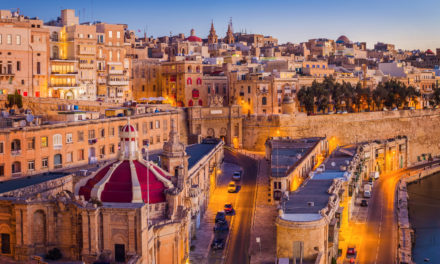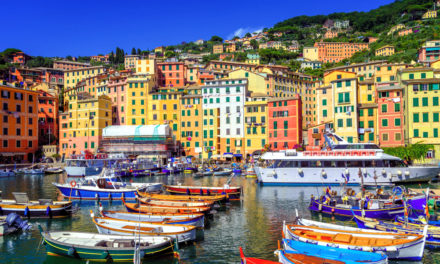Top Tourist Attractions And Things To Do In Croatia
Croatia, situated in Southeast Europe along the Adriatic Sea, is famed for its breathtaking coastline, historical richness, and varied landscapes. It boasts over a thousand islands with beautiful beaches, hidden coves, and lively marinas, especially on the scenic Dalmatian coast, home to historical cities like Dubrovnik and Split.
Inland, Croatia offers lush forests, rolling hills, and pristine rivers, with national parks like Plitvice Lakes and Krka celebrated for their natural beauty. Croatian cuisine reflects its diverse terrain, combining Mediterranean and Central European influences, featuring fresh seafood on the coast and hearty meats, cheeses, and wines inland. A popular tourist destination, Croatia attracts visitors with its natural and historical allure, hospitable culture, safety, and affordability.
We’ve curated a list of “Best Places to Visit in Croatia” to ensure your journey is truly unforgettable.
Tourist Travel Map of Croatia
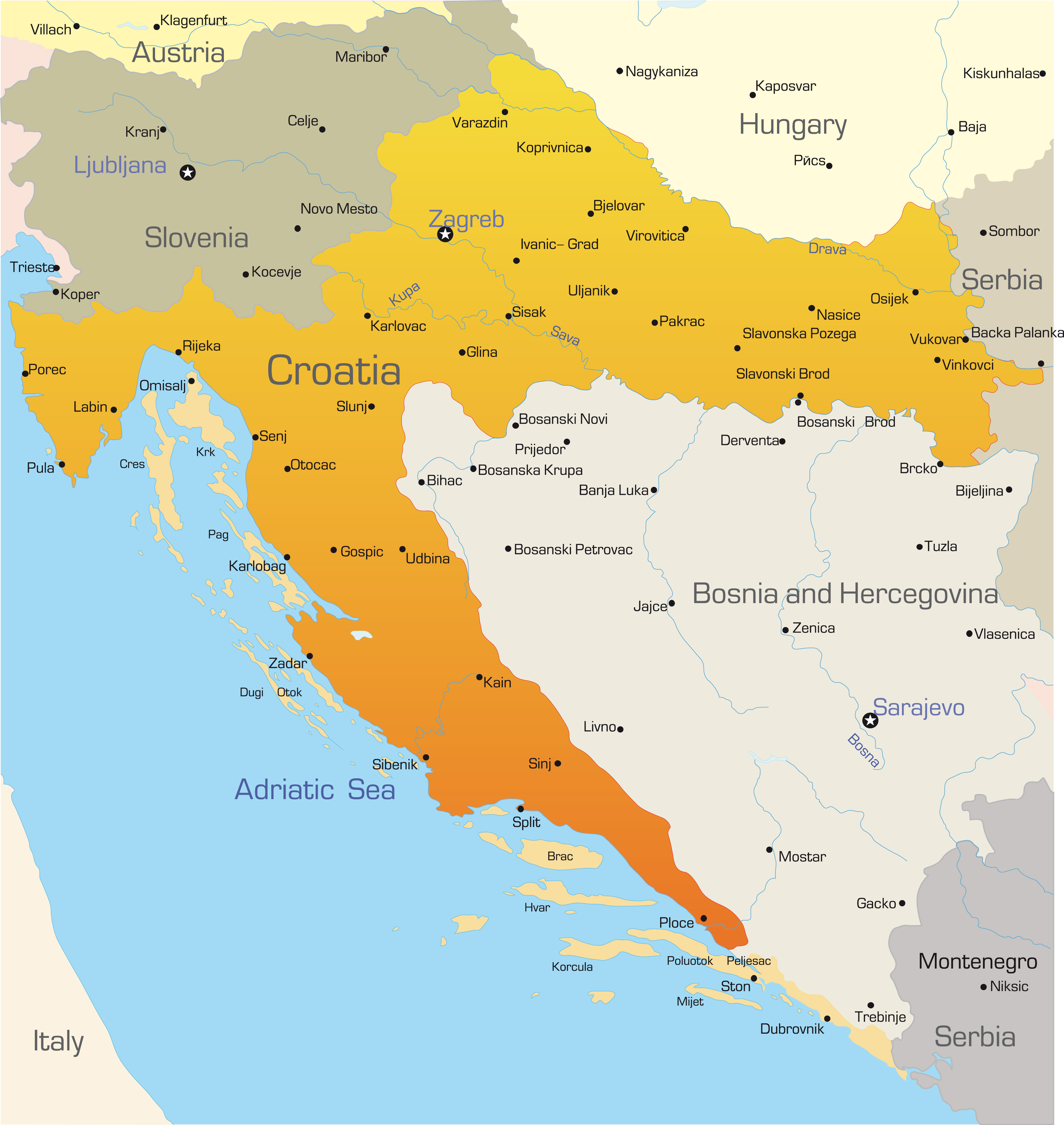
Best Places To Visit In Croatia
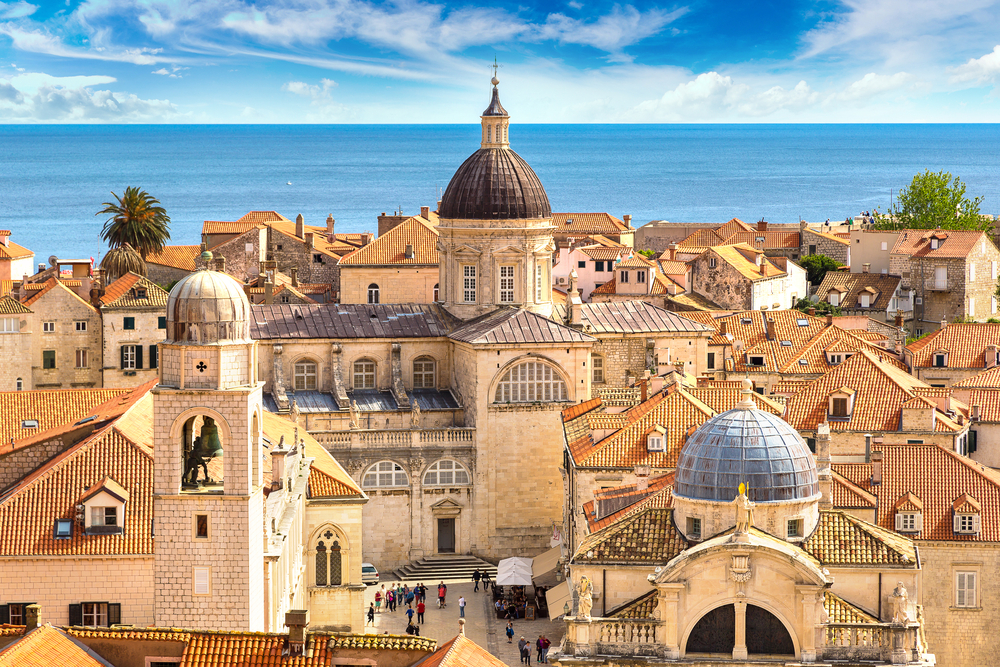
Dubrovnik, Croatia:
Dubrovnik, a stunning coastal city in southern Croatia, is renowned for its remarkable history and breathtaking beauty. Often referred to as the “Pearl of the Adriatic,” it is situated on the Dalmatian coast and is known for its distinctive Old Town, encircled with massive stone walls completed in the 16th century.
This UNESCO World Heritage site is a historic architecture and cultural monument treasure trove. The Old Town is free from vehicular traffic. Dubrovnik’s location on the Adriatic Sea also makes it a popular destination for sea lovers.
How to Reach Dubrovnik:
Situated along the Dalmatian Coast, Dubrovnik graces the southern tip of Croatia and is easily accessible via air, land, and sea. Its coastal position offers stunning Adriatic views and makes it a gateway to nearby islands.
Number of Days to Visit Dubrovnik:
A 3 to 4-day visit will give you ample time to soak in the city’s splendors.
Tourist Attractions and Things to Do in Dubrovnik:
- City Walls: Walk along the medieval fortifications for breathtaking views.
- Old Town: Navigate limestone-paved streets teeming with history.
- Lokrum Island: A quick ferry ride takes you to this nature reserve.
- Cable Car Ride: Ascend to Mount Srđ for a panoramic overlook.
- Rector’s Palace: Dive into the city’s governance history in this Gothic-Renaissance marvel.
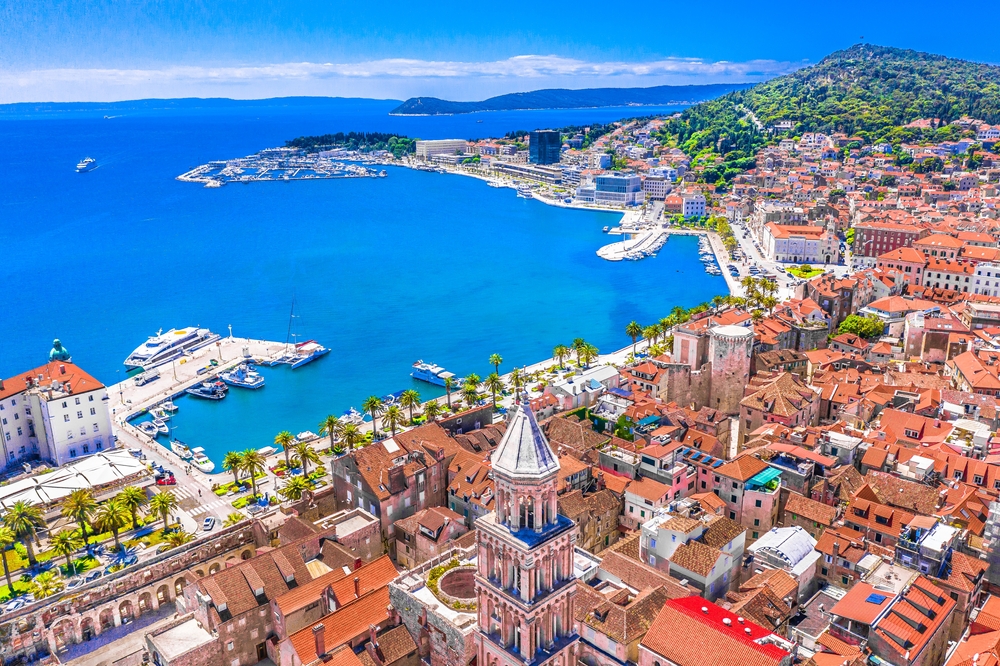
Split, Croatia:
Split, Croatia’s vibrant second-largest city on the Dalmatian Coast, is famed for its historical richness and striking architecture, notably the Diocletian’s Palace, a UNESCO World Heritage site dating back to the 4th century.
The city center, anchored by the bustling waterfront promenade, the Riva, is a lively maze of narrow streets, cafes, bars, and shops. Serving as a hub to Adriatic islands like Hvar, Brac, and Korcula, Split is an ideal starting point for island exploration.
Its unique mix of ancient charm, modern energy, cultural vibrancy, and scenic beaches makes it a favored destination among travelers.
How to Reach Split: Nestled in Central Dalmatia, Split is well-connected via an international airport and ferry services. The city’s prime coastal location makes it a convenient launching point for island-hopping adventures.
Number of Days to Visit Split: Around three days will give you enough time to experience the city’s main attractions and take a day trip to a nearby island.
Tourist Attractions and Things to Do in Split:
- Diocletian’s Palace: Wander through this ancient Roman complex.
- Marjan Hill: Get your dose of nature and scenic views.
- Riva Promenade: Enjoy cafes and people-watching by the sea.
- Bačvice Beach: Sunbathe and swim in the heart of the city.
- Klis Fortress: Experience history and panoramic vistas.
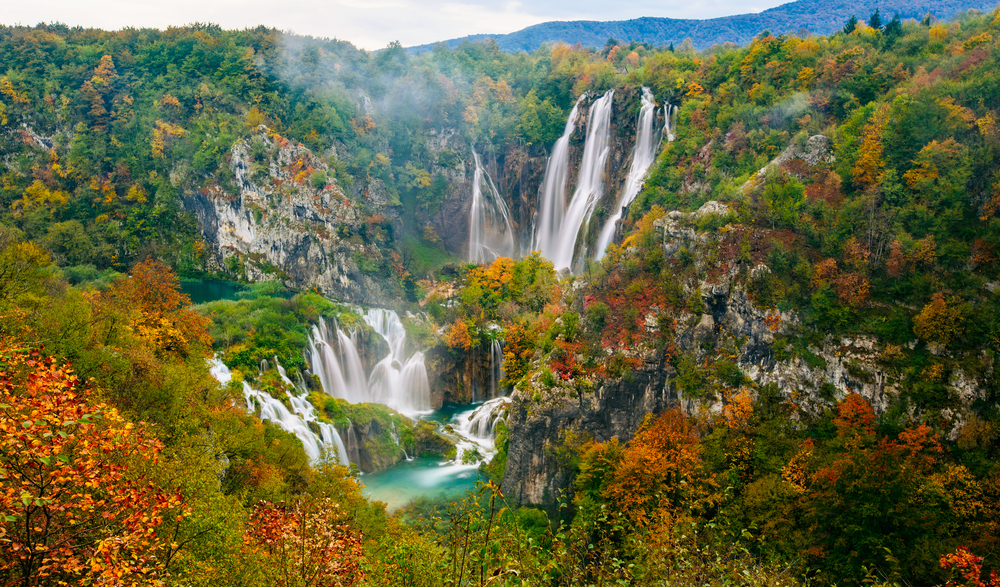
Plitvice Lakes National Park, Croatia:
Plitvice Lakes National Park in Croatia, a UNESCO World Heritage site, is famous for its 16 terraced lakes and cascading waterfalls set in a limestone canyon. The lakes’ colors vary beautifully, influenced by minerals and sunlight. Covering 300 square kilometers, it’s a biodiversity haven with rich flora and fauna.
Visitors can enjoy the park’s natural beauty through walking trails, boardwalks, and boat rides. Offering distinct experiences across seasons, Plitvice Lakes is both a popular tourist spot and a crucial natural reserve.
How to Reach Plitvice Lakes National Park:
Tucked away in central Croatia, the park is about a two-hour drive from Zagreb, making it accessible for day trips and longer stays. Its inland position contrasts with Croatia’s famed coastal spots, providing a different natural experience.
Number of Days to Visit Plitvice Lakes National Park:
Spend at least two days here to fully experience the interconnected lakes, trails, and waterfalls that make the park so unique.
Tourist Attractions and Things to Do in Plitvice Lakes National Park:
- Veliki Slap: Croatia’s tallest waterfall and a stunning sight to behold.
- Kozjak Lake: The park’s largest lake, perfect for boat rides.
- Barać Caves: Explore the ancient limestone caves.
- Lower Lakes: A cluster of smaller lakes featuring exquisite waterfalls.
- Wooden Walkways: Stroll along these to get close to the water features.
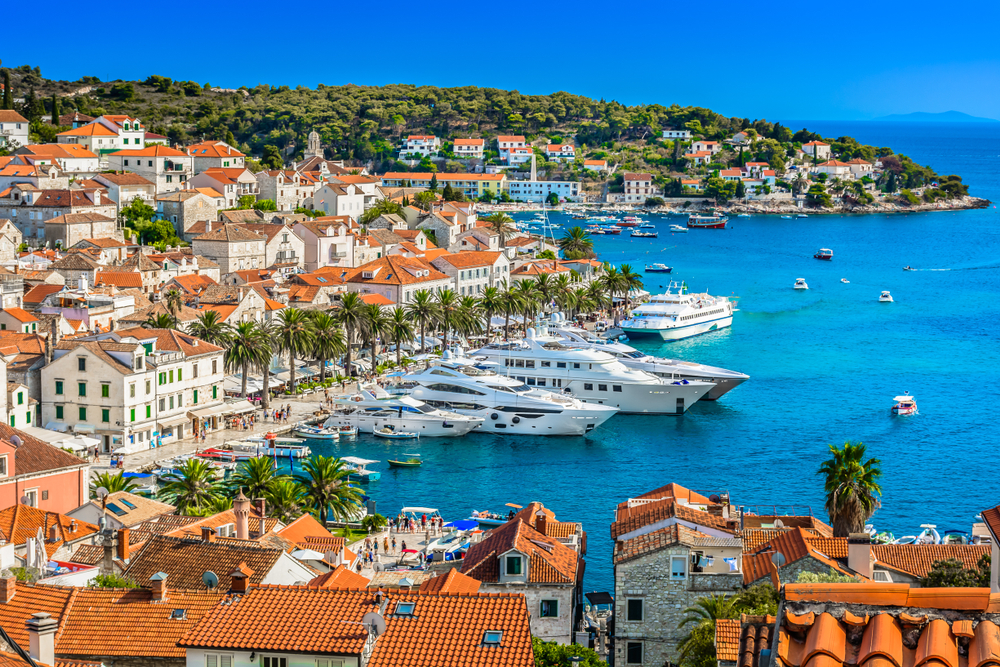
Hvar Island, Crotia:
Hvar, a Croatian island in the Adriatic Sea, is known for its striking beauty, vibrant nightlife, and rich cultural history. Famous for its sunny weather, Hvar boasts lush vineyards, olive groves, and fields of lavender.
The island’s main town, Hvar, features a picturesque harbor, Renaissance-era architecture, and a hilltop fortress with panoramic views. Hvar is a popular destination for yachting and nightlife, attracting a lively, upscale crowd.
Its smaller towns, like Stari Grad and Jelsa, offer a more tranquil experience, showcasing the island’s long history and traditional charm. Hvar’s clear waters, scenic beaches, and unspoiled nature make it a beloved spot for relaxation and adventure.
How to Reach Hvar Island:
Nestled in the Adriatic Sea, Hvar Island is a ferry ride away from Split. Its prime location makes it a popular stop for yachts and sailing adventures, lending a cosmopolitan flair to this natural paradise.
Number of Days to Visit Hvar Island:
Three to four days give you ample time to soak in the island’s beauty, from its lavender fields to bustling squares.
Tourist Attractions and Things to Do in Hvar Island:
- St. Stephen’s Square: The heart of Hvar Town, filled with shops, cafes, and local culture.
- Pakleni Islands: A nearby archipelago perfect for snorkeling and water activities.
- Hvar Fortress: Offering panoramic views of the island and beyond.
- Lavender Fields: Lose yourself in the aromatic fields that make Hvar famous.
- Dubovica Beach: A secluded beach spot ideal for some sun and serenity.
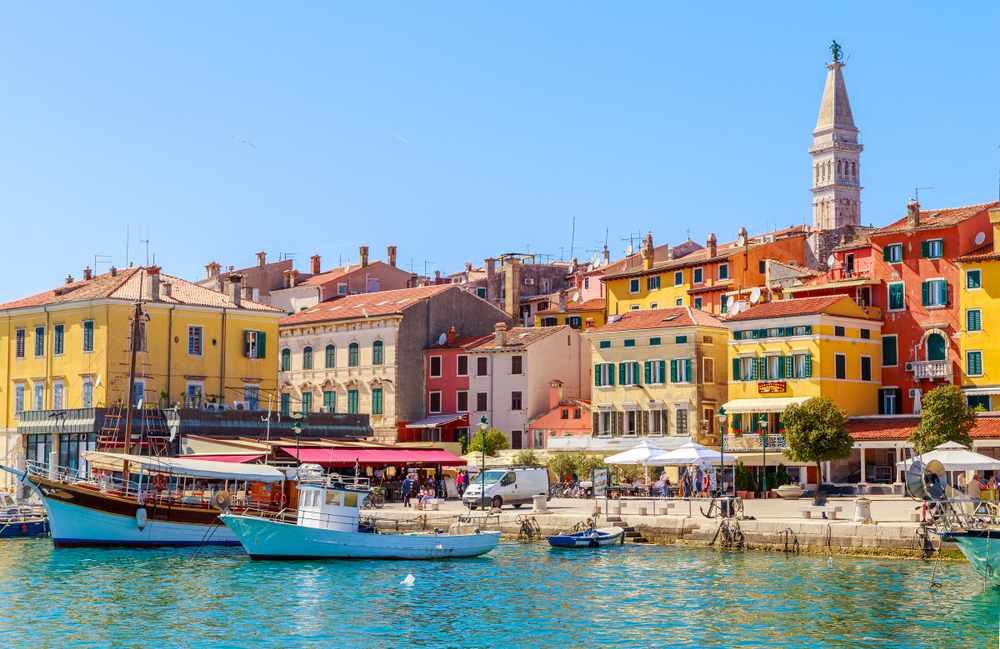
Rovinj, Croatia:
Rovinj, a picturesque coastal town in Croatia, is known for its charming Mediterranean ambiance and rich history. Located on the western coast of the Istrian Peninsula, it’s famous for its old town, which stands on a peninsula previously an island. This area has narrow, cobbled streets and colorful buildings leading up to the hilltop church of St. Euphemia, whose towering steeple dominates the skyline.
The town’s Venetian heritage is evident in its architecture and layout, reminiscent of a miniature Venice. Rovinj’s vibrant harbor has cafes and restaurants offering fresh seafood and local Istrian cuisine. The town is also surrounded by beautiful beaches and an archipelago of small islands, easily accessible by boat.
Rovinj has become a popular tourist destination known for its art galleries, annual festivals, and welcoming atmosphere. The surrounding area is famous for its natural beauty, including the protected Rovinj Archipelago and the nearby Lim Bay.
How to Reach Rovinj:
Located on the western coast of the Istrian Peninsula, Rovinj is about a 45-minute drive from Pula. Thanks to its rich history, it’s easily reachable and offers a mix of Italian and Croatian influences.
Number of Days to Visit Rovinj:
A 2 to 3-day stay will give you a good taste of Rovinj’s historic sites, delicious cuisine, and stunning beaches.
Tourist Attractions and Things to Do in Rovinj:
- Old Town: Wander through cobblestone streets and explore Venetian-era buildings.
- Church of St. Euphemia: This Baroque church dominates the skyline and offers panoramic views.
- Golden Cape Forest Park: A tranquil place to hike or bike away from the city buzz.
- Rovinj Market: Discover local flavors, from fresh fish to olive oil.
- Balbi Arch: A historical gateway that marks the entrance to the Old Town.
Want to Explore Top Destinations in Europe?
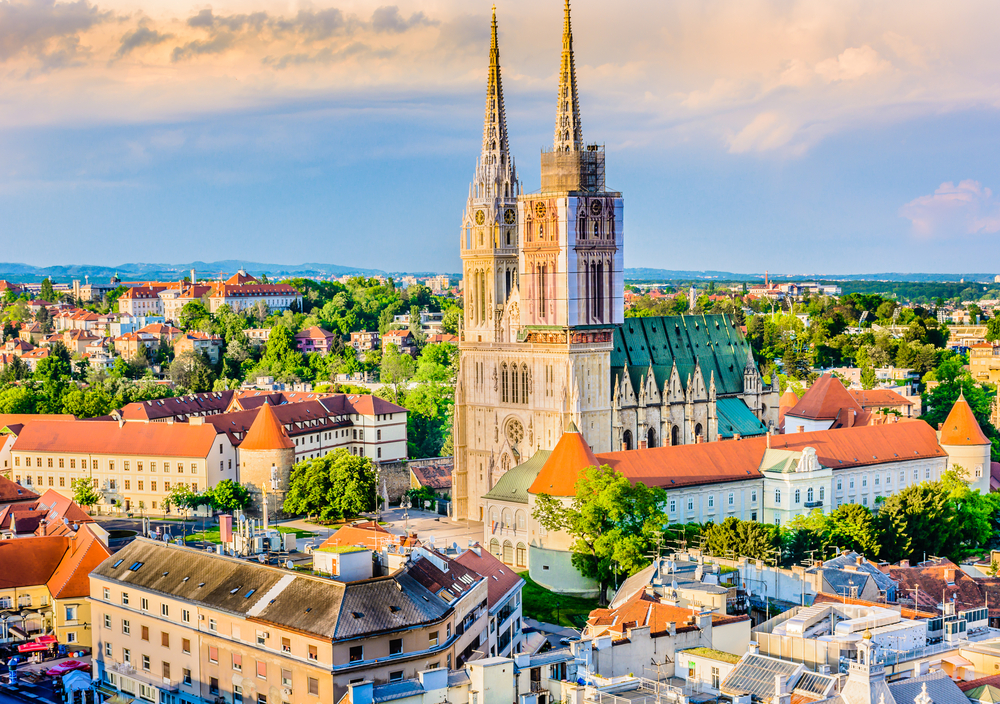
Zagreb, Croatia:
Zagreb, the capital of Croatia, is a vibrant city known for its historic architecture, cultural richness, and lively atmosphere. Situated along the Sava River, it blends Austro-Hungarian heritage with contemporary energy.
The city’s two main sections, the Upper Town (Gornji Grad) and Lower Town (Donji Grad), offer a mix of classic landmarks like the Gothic Zagreb Cathedral and the bustling Ban Jelačić Square.
Zagreb is also home to numerous museums, galleries, and theaters, reflecting its strong cultural scene. Green spaces like Maksimir Park and Jarun Lake provide leisure and recreation, making Zagreb a dynamic blend of history, culture, and modern urban life.
How to Reach Zagreb:
Situated in northwestern Croatia along the Sava River, Zagreb is well-connected by various transport modes. The city is a gateway to many other Croatian destinations, making it a convenient starting or ending point for your journey.
Number of Days to Visit Zagreb:
A stay of 3 to 4 days allows you to dig deep into Zagreb’s rich tapestry of art, architecture, and café culture.
Tourist Attractions and Things to Do in Zagreb:
- Ban Jelačić Square: The pulsating heart of Zagreb, great for people-watching and shopping.
- Zagreb Cathedral: A Gothic masterpiece and one of the tallest structures in Croatia.
- Museum of Broken Relationships: A quirky museum that captures the essence of human emotions.
- Tkalciceva Street: A bustling lane filled with cafes, bars, and boutique shops.
- Medvednica Mountain: Take a hike or cable car to the top for a nature escape.
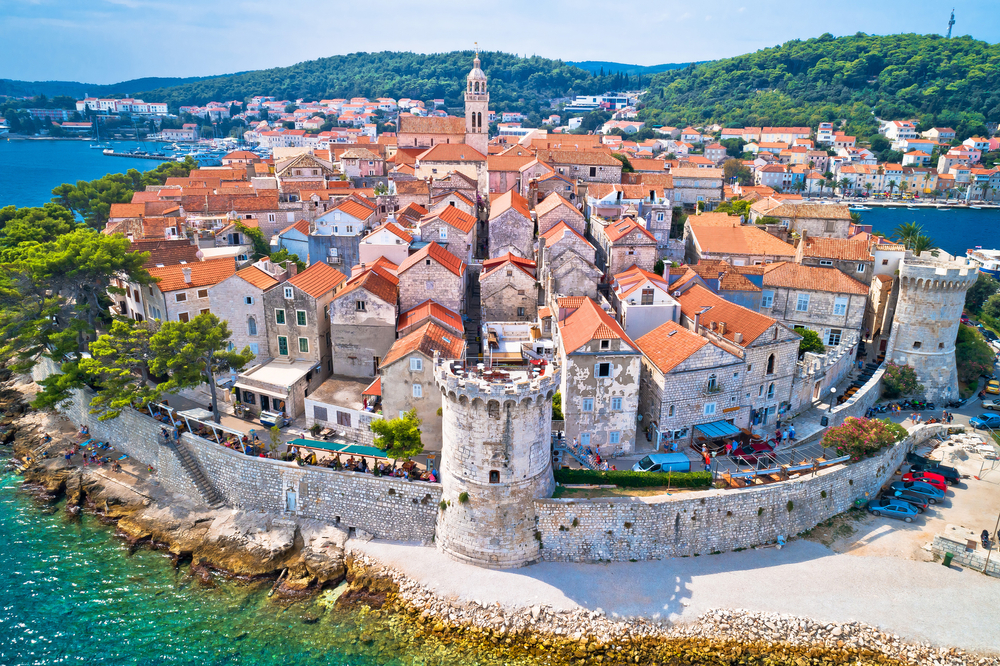
Korcula, Croatia:
Korčula, an island in Croatia’s Adriatic Sea, is known for its dense forests, ancient Greek origins, and medieval architecture. Its main town, Korčula, is often called “Little Dubrovnik” due to its encircling walls and well-preserved buildings. This town features narrow, cobblestone streets and the house reputedly the birthplace of Marco Polo. The island’s vineyards produce white wines like Pošip and Grk, adding to its allure.
How to Reach Korčula:
Korčula is off the southern Dalmatian coast, accessible by a 2-hour ferry ride from Split or Dubrovnik. Its isolation adds to its allure, providing a more serene alternative to Croatia’s busier spots.
Number of Days to Visit Korčula:
A stay of 3 days will allow you to experience the island’s top sights, from its medieval Old Town to its secluded beaches.
Tourist Attractions and Things to Do in Korčula:
- Old Town Korčula: Marvel at the fortified walls and well-preserved medieval architecture.
- Marco Polo’s House: Visit the claimed birthplace of the legendary explorer.
- Vela Przina Beach: A sandy retreat perfect for sunbathing and swimming.
- Moreska Sword Dance: Witness this traditional dance, unique to the island.
- Korčula Town Museum: Immerse yourself in the island’s rich history and culture.
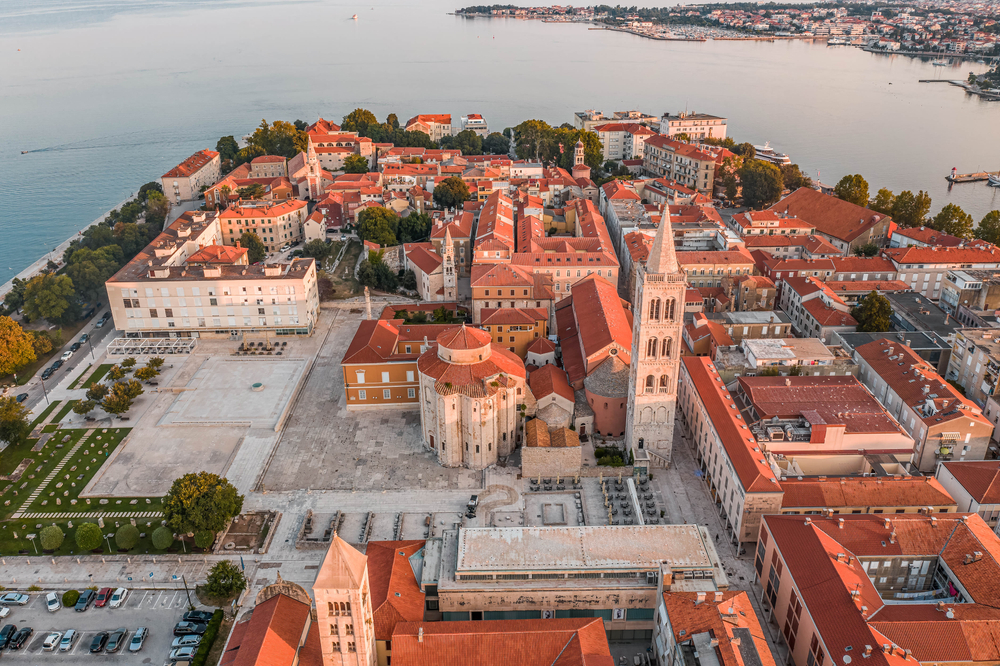
Zadar, Croatia:
Zadar, a historic city on Croatia’s Dalmatian coast, is renowned for its Roman and Venetian ruins, medieval churches, and cosmopolitan urban life.
Famous for the Roman Forum and St. Anastasia’s Cathedral, Zadar also boasts modern attractions like the Sea Organ, an architectural sound art object, and the Sun Salutation light installation. Zadar offers ancient history, contemporary art, a lively waterfront, and beautiful sunsets.
How to Reach Zadar:
Situated on the northern Dalmatian Coast, Zadar is about a 3-hour from the capital, Zagreb. The city is a microcosm of Croatia’s diverse landscape, surrounded by archipelagos and backed by rugged mountains.
Number of Days to Visit Zadar:
Three days is ideal for soaking in Zadar’s eclectic mix of attractions, from ancient ruins to modern art.
Tourist Attractions and Things to Do in Zadar:
- Sea Organ: An art installation that plays music through the movement of the sea.
- Roman Forum: Explore the ruins of this ancient Roman public square.
- Church of St. Donat: A pre-Romanesque gem dating back to the 9th century.
- Zadar Riva: The seafront promenade is ideal for a leisurely walk.
- Plitvice Lakes Day Trip: A 2-hour drive away, this national park is a natural marvel.
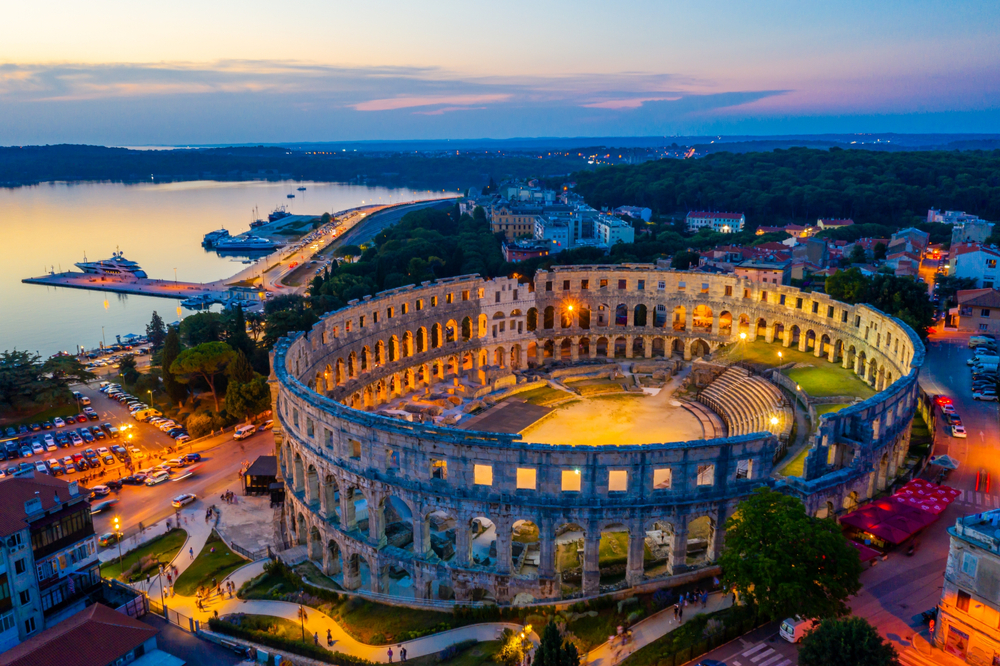
Pula, Croatia:
Pula, a seafront city on Croatia’s Istrian Peninsula, is known for its protected harbor, beach-lined coast, and Roman ruins. The well-preserved Pula Arena, an immense amphitheater among the world’s largest surviving Roman arenas, dominates the city.
Pula seamlessly blends its ancient Roman architecture, like the Triumphal Arch of the Sergii, with a vibrant, modern lifestyle. The city’s rich history, Mediterranean climate, and culinary scene, featuring fresh seafood and Istrian specialties, make it a popular tourist destination in Croatia.
How to Reach Pula, Croatia:
Located in the southwestern region of the Istrian Peninsula, Pula is about a 3-hour drive from Zagreb. The city’s coastal setting offers a mix of cultural and nautical experiences, making it a versatile travel destination.
Number of Days to Visit Pula, Croatia:
Plan for a 2 to 3-day visit to unearth Pula’s rich history while also enjoying its stunning beaches and cuisine.
Tourist Attractions and Things to Do in Pula, Croatia:
- Pula Arena: One of the best-preserved Roman amphitheaters in the world.
- Brijuni National Park: A group of islands perfect for day trips and nature walks.
- Temple of Augustus: An ancient Roman temple dedicated to the first Roman emperor.
- Pula Fortress: Offers panoramic views of the city and harbor.
- Verudela Beach: A stunning pebble beach with crystal-clear waters.
For those seeking to combine historical exploration with the joys of coastal living, Pula stands as a compelling must-visit city on your Croatian itinerary.
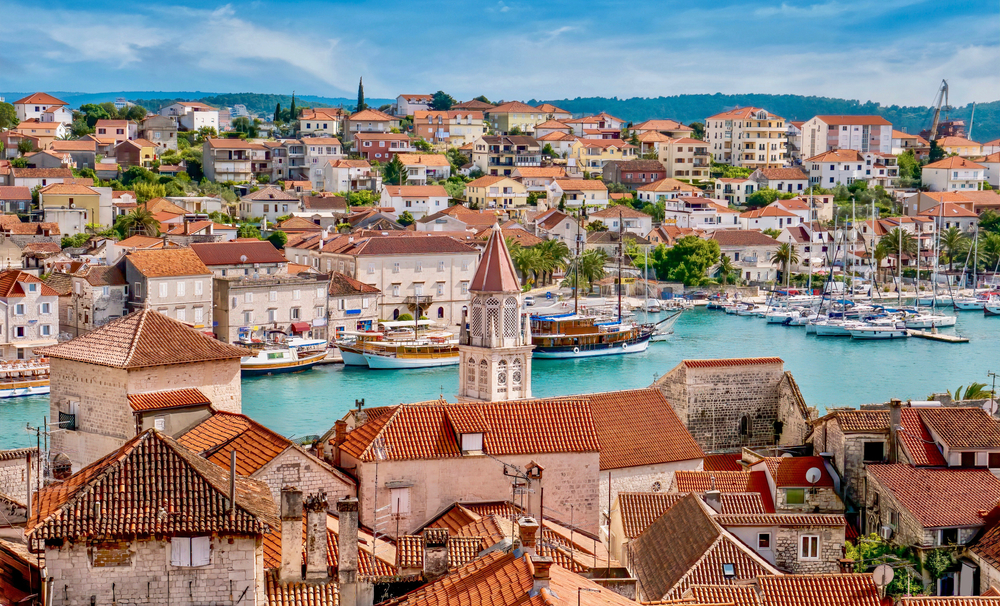
Trogir, Croatia:
Trogir, a historic town and harbor on the Adriatic coast in Croatia, is known for its well-preserved medieval architecture and scenic seaside setting. A UNESCO World Heritage site, Trogir’s old town is situated on a small island connected to the mainland and the island of Čiovo by bridges.
The town’s narrow, winding streets lead to various historic sites, including the remarkable Cathedral of St. Lawrence with its famous portal by Master Radovan. Trogir’s blend of Renaissance, Baroque, and Romanesque buildings reflects its rich history, once under Greek, Roman, and Venetian rule.
How to Reach Trogir:
Trogir is conveniently situated just 27 kilometers west of Split. Its compact size belies its rich history, seen in its stunning architecture and narrow alleys that are begging to be explored.
Number of Days to Visit Trogir:
A 2-day trip is enough to cover the town’s major attractions, though you might be tempted to stay longer just to soak in its Mediterranean charm.
Tourist Attractions and Things to Do in Trogir:
- Trogir Cathedral: A Romanesque-Gothic masterpiece that dominates the town square.
- Ciovo Island: Accessible by a bridge, it offers idyllic beaches and a break from the crowd.
- Kamerlengo Castle: A 15th-century fortress offering panoramic views.
- St. Lawrence Square: The town’s vibrant hub, replete with cafes and boutiques.
- Museum of Sacred Art: Houses a compelling collection of religious art dating back to the 13th century.
For travelers seeking a cozy, historic town teeming with architectural splendors and intimate beaches, Trogir is a remarkable stop on any Croatian adventure.
Ready to Explore Top Destinations in North America?
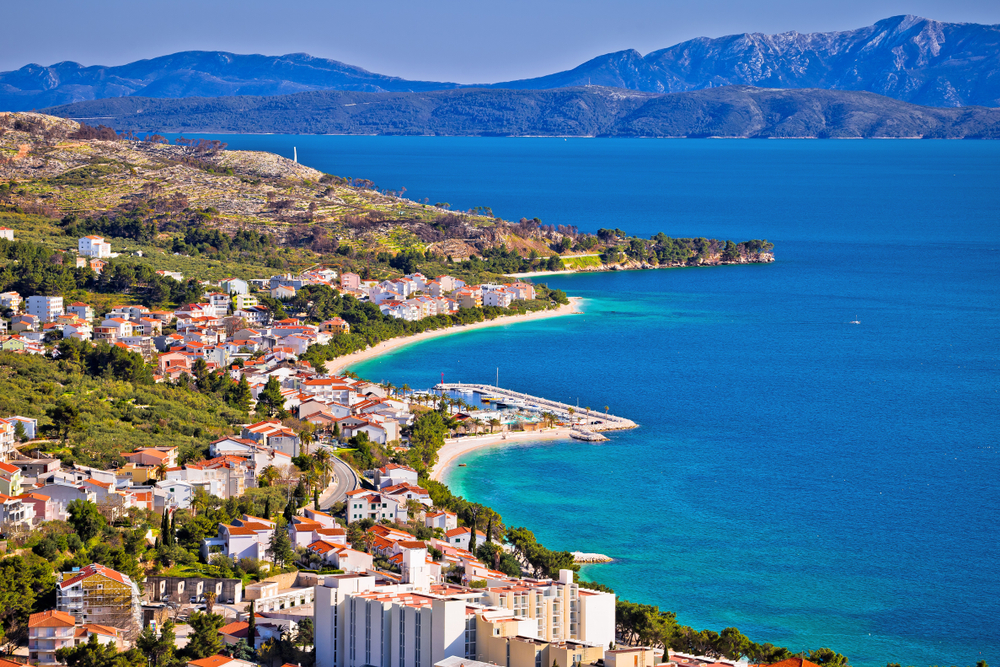
Makarska Riviera, Croatia:
The Makarska Riviera in Croatia is a stunning stretch of coastline along the Adriatic Sea. It is known for its beautiful beaches, clear turquoise waters, and the impressive Biokovo mountain range that serves as a dramatic backdrop. This Riviera, extending from Brela to Gradac, is famed for its pebbly beaches, pine trees, and vibrant seaside promenades.
The main town, Makarska, is a hub of activity with its lively bars, restaurants, and cultural events. This region is famous for water sports, hiking in the Biokovo Nature Park, and enjoying the Mediterranean climate.
How to Reach Makarska Riviera:
Situated along the Dalmatian Coast, Makarska Riviera is about an hour’s drive from Split. Nestled between the Biokovo Mountain Range and the Adriatic Sea, this region serves as a paradise for beachcombers and hikers alike.
Number of Days to Visit Makarska Riviera:
A leisurely 3 to 4-day stay will allow you to explore the Riviera’s breathtaking beaches, charming towns, and hiking trails.
Tourist Attractions and Things to Do in Makarska Riviera:
- Nugal Beach: A secluded pebble beach renowned for its pristine waters.
- Biokovo Nature Park: Offers hiking trails with jaw-dropping views of the Adriatic.
- Makarska Harbour: A bustling area filled with restaurants and shops.
- Vepric Shrine: A tranquil spiritual site nestled in a natural setting.
- Sea Shell Museum: A unique collection that will captivate both kids and adults.
Makarska Riviera is a compelling option for anyone wanting to experience the Dalmatian Coast’s dazzling beauty while enjoying a variety of activities.
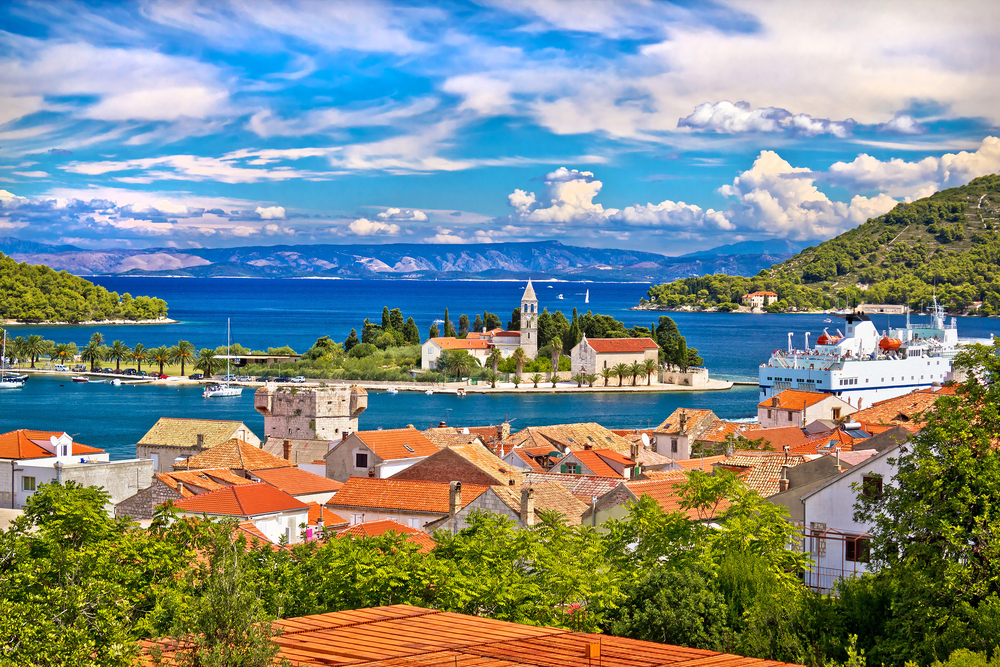
Vis Island, Croatia:
Vis Island, the furthest inhabited island off Croatia’s Adriatic coast, is celebrated for its unspoiled beauty and historical significance. Known for its strategic military importance throughout history, Vis was closed to the public until 1989, preserving its traditional charm. The island boasts crystal-clear waters, secluded beaches, and picturesque landscapes.
Its two main towns, Vis and Komiža, are characterized by stone architecture, quaint fishing harbors, and a relaxed way of life. Vis is also renowned for its excellent seafood, local wines like Vugava and Plavac Mali, and the Blue Cave on the nearby Biševo Island, famous for its mesmerizing blue light.
How to Reach Vis Island:
Located about 60 kilometers off the mainland, Vis Island is accessible via a two-hour ferry ride from Split. It’s a sparsely populated wonder that serves as a tranquil counterpoint to Croatia’s bustling tourist spots.
Number of Days to Visit Vis Island:
We recommend a 3-day stay to fully soak up the island’s natural beauty, historic sites, and outdoor adventures.
Tourist Attractions and Things to Do in Vis Island:
- Blue Cave: A mesmerizing natural phenomenon where sunlight illuminates the cave’s interior.
- Komiza: A picturesque fishing village with historic charm.
- Stiniva Cove: A secluded beach accessed through a narrow sea entrance.
- Mount Hum: The highest point on the island, offering panoramic views.
- Vis Town: A quaint harbor town teeming with Venetian architecture and a relaxing vibe.
For those looking to escape the crowds and immerse themselves in untouched nature and compelling history, Vis Island stands out as an unspoiled retreat in Croatia.
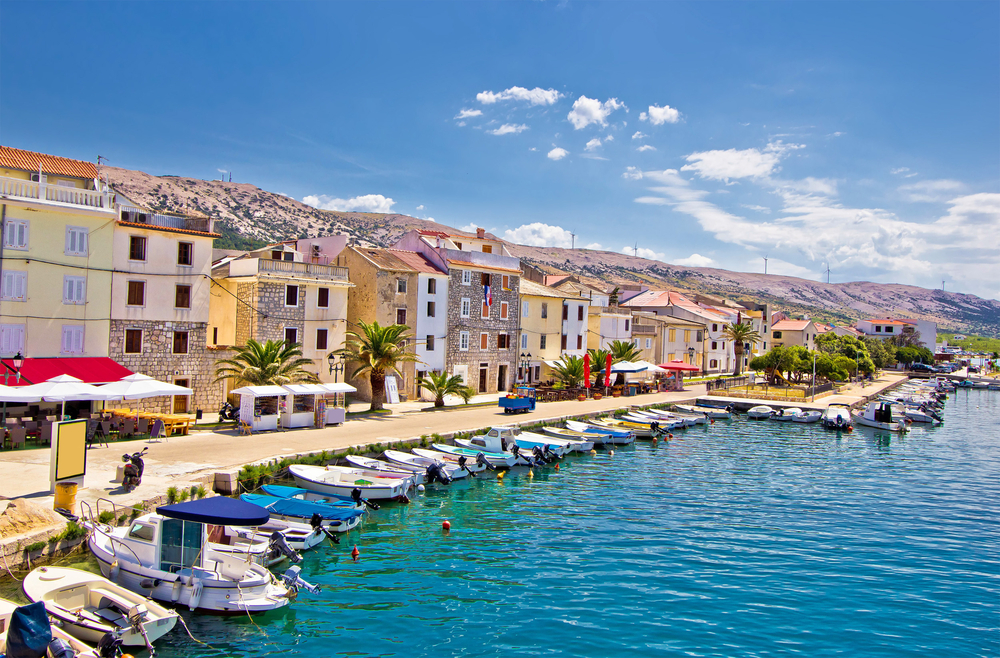
Pag Island, Croatia:
Pag Island, located in Croatia’s Adriatic Sea, is distinctive for its moon-like, rocky landscapes and renowned for producing Pag cheese, a unique, flavorful sheep’s milk cheese. The island is also famous for its lace-making tradition, a meticulous craft passed down through generations. Pag’s main town, also named Pag, is known for its 15th-century salt pans and old churches.
The island’s vibrant nightlife attracts a youthful crowd, particularly in the beach resort of Novalja and its famous Zrće Beach. Pag offers a blend of traditional culture, culinary delights, and modern entertainment against a stark, natural beauty backdrop.
How to Reach Pag Island:
Situated in the northern Adriatic Sea, Pag Island is easily reachable via a bridge from mainland Croatia. The island’s landscape is an intriguing blend of barren, moon-like terrains and lush olive groves.
Number of Days to Visit Pag Island:
A 2 to 3-day visit gives you ample time to savor Pag’s unique flavors and participate in its lively entertainment scene.
Tourist Attractions and Things to Do in Pag Island:
- Zrce Beach: Known as the “Ibiza of Croatia,” this beach is a mecca for electronic music lovers.
- Pag Lace: Admire the intricate hand-made lace, a centuries-old tradition here.
- Cheese Tasting: Don’t miss sampling Pag cheese, a salty delight.
- Simuni Beach: Ideal for families seeking calmer waters and scenic beauty.
- Old Town Pag: Stroll through ancient streets, discovering historical architecture and charming squares.
If your travel persona craves a fusion of culinary excellence and high-energy revelry, Pag Island serves as your perfect Croatian escape.
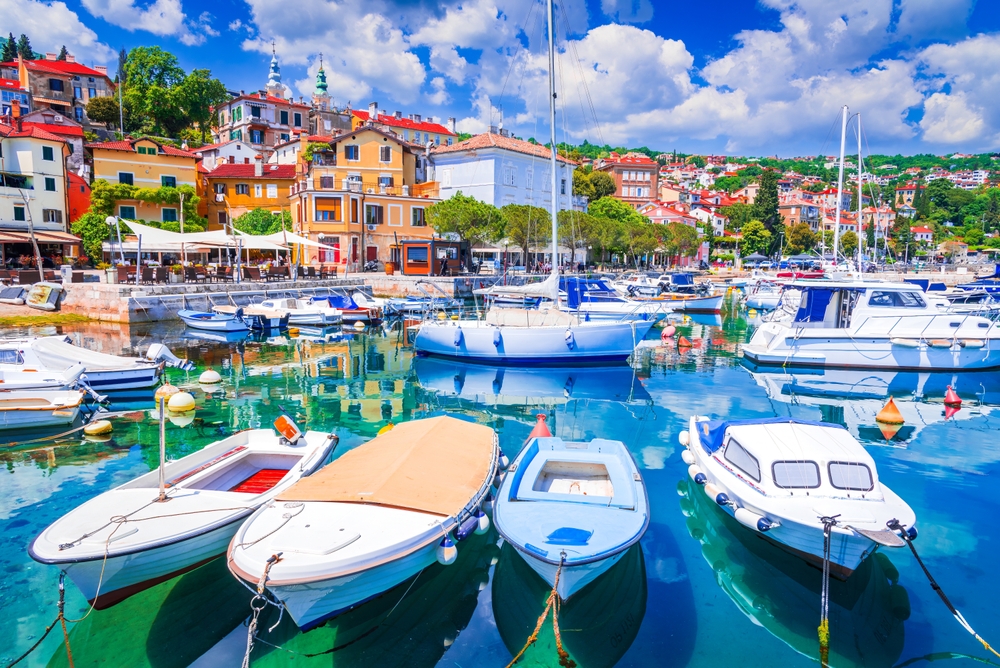
Opatija, Croatia:
Opatija, a coastal town in Croatia, is nestled on the Adriatic Sea in the Gulf of Kvarner. Known for its Mediterranean climate and historic buildings reminiscent of the Austro-Hungarian Empire, Opatija was a fashionable seaside resort for the elite in the 19th century.
Its elegant villas, hotels, lush gardens, and scenic Lungomare promenade along the coastline make it a charming destination. Opatija is also famous for its well-maintained public parks, beautiful beaches, and culinary offerings, from traditional Austro-Hungarian delicacies to fresh seafood.
How to Reach Opatija:
Situated in the Kvarner Gulf of the northern Adriatic, Opatija is a quick drive from Rijeka, Croatia’s third-largest city. With its long promenade and elegant villas, the town evokes a distinctly European sophistication.
Number of Days to Visit Opatija:
To fully explore its lush parks, iconic landmarks, and savor the culinary offerings, consider spending 2 to 4 days in Opatija.
Tourist Attractions and Things to Do in Opatija:
- Lungomare Promenade: An enchanting seafront walkway stretching over 12 kilometers.
- Villa Angiolina: The 19th-century mansion that sparked Opatija’s transformation into a resort town.
- Maiden with the Seagull: This statue has become an emblem of Opatija.
- St. James’s Church: A blend of different architectural styles, offering a quiet respite.
- Open-Air Theatre: Catch a live performance in this historic and atmospheric venue.
For travelers seeking both historical richness and today’s comforts, Opatija stands as an opulent yet welcoming destination in Croatia.

